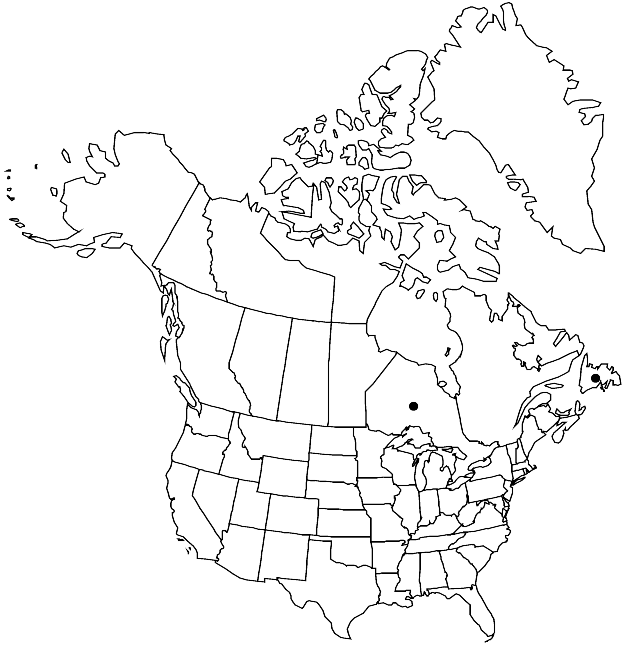Isothecium alopecuroides
Ann. Bot. Fenn. 18: 202. 1981.
[Plants large, yellowish to brownish green, not strongly glossy. Stems with stipe short or not evident, secondary stems 1–5 cm, julaceous when dry, irregularly branched, branches of equal length (1–2 cm), flagelliform branches absent; pseudoparaphyllia foliose, pointed or blunt. Primary-stem leaves broadly to narrowly triangular; margins weakly or not toothed; apex attenuate, sometimes secund; costa short or ecostate; alar cells weakly differentiated, region small, to 1/10 leaf length. Branchlet leaves ovate to ovatelanceolate; margins entire, slightly toothed in apex; apex blunt; costa to 2/3 leaf length; alar cells rounded to 4–6-sided, pigmented, region often excavate, confined to base just distal to marginal insertion. Seta 0.8–1.2 cm. Capsule 2–2.4 mm].
Habitat: Rock
Elevation: moderate elevations
Distribution

Nfld. and Labr. (Nfld.), Ont., Europe
Discussion
The description here of Isothecium alopecuroides is based on European specimens. The species has been reported from Newfoundland by B. H. Allen (1983b). The single specimen from Ontario is from Thunder Bay, collected by I. Brodo; it is scant and poorly developed, consisting of short secondary shoots. The specimens were correctly identified by R. R. Ireland and Allen and reported by the latter (Allen 1982). Able collectors have explored the two areas but have not rediscovered it. Isothecium alopecuroides is a phytogeographic puzzle and unlikely to have been introduced through human activity. Further collections are needed to demonstrate that it survives; its presence in North America seems doubtful. The primary stem leaves are small; the branchlet leaves are imbricate to subjulaceous when dry and abruptly tapering to the apex.
Selected References
None.